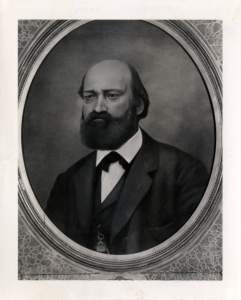George DeBaptiste (American National Biography)
Scholarship
Between 1836 and 1838 DeBaptiste moved to Madison, Indiana, where he barbered, engaged in a number of other business enterprises, and served as a conductor for the underground railroad. Although the number of slaves he directly assisted is unknown, DeBaptiste gained a reputation as an abolitionist and conductor by crossing the Ohio River into Kentucky and escorting fugitive slaves into Indiana and Ohio. From there, they would go to Michigan and eventually Canada. His reputation as a conductor drew the ire of local whites. Probably as a result of his notoriety, the state of Indiana prosecuted George for residing in the state without paying the bond required of free blacks. He was saved from expulsion and possible sale into slavery by Stephen C. Stevens, a former member of the Indiana Supreme Court and prominent white attorney who opposed slavery. Stevens argued against the order expelling DeBaptiste, claiming that it was unconstitutional and did not specify his state of origin (where he was to be returned) as the law required. The court agreed only that the order was defective and allowed DeBaptiste to remain a resident.
David F. Herr, "DeBaptiste, George," American National Biography Online, February 2000, http://www.anb.org/articles/15/15-01037.html.
George DeBaptiste (Bordewich, 2006)
Scholarship
In many river communities, underground work was carried out almost entirely by African Americans. One of the most effective networks of all was based in the port of Madison, Indiana, about eighty miles downriver from Cincinnati. With a few exceptions, it is difficult to form a sharp picture of the men who formed this cell. None of them left memoirs or diaries. Their activities remain visible at all only as they have been refracted through the anecdotes of white abolitionists, often long after the fact, and in a handful of nineteenth-century newspaper articles that omit more than they reveal. It is clear that the man at the cell’s center in the early 1840s was the freeborn Virginian George DeBaptiste, whose picaresque career suggests that he had much more than the average share of charm and nerve. A natural mole, he would not have been out of place in the shadowy world of twentieth-century espionage. The only picture of him, an engraving made later in his life when he had become a successful businessman in Detroit, is revealing: it shows a rather heavy-featured man, with beetling brows and deep-set, grave eyes, and a short, dense beard that enfolds his square jaw like a baseball glove. Born in Fredericksburg, Virginia, in 1814, he was trained as a barber, and by the age of eighteen became the body servant of a professional gambler, with whom he traveled widely around the country, including the Deep South. In 1838 DeBaptiste had settled in Madison, and his barbershop at the corner of Second and Walnut soon became the underground’s local headquarters.
Fergus M. Bordewich, Bound for Canaan: The Epic Story of the Underground Railroad, America's First Civil Rights Movement (New York: Amistad, 2006), 202.

